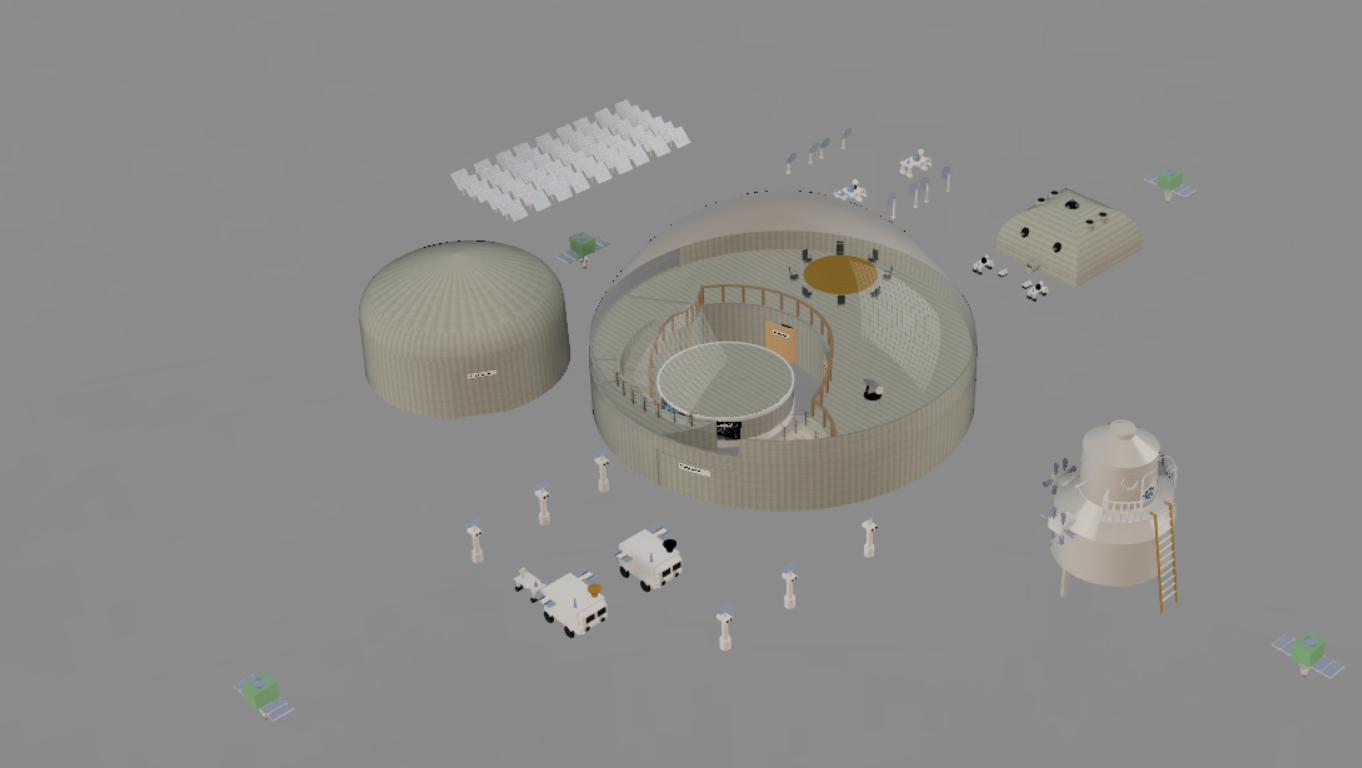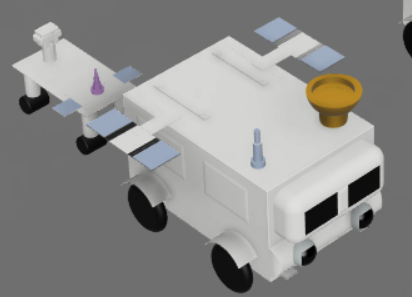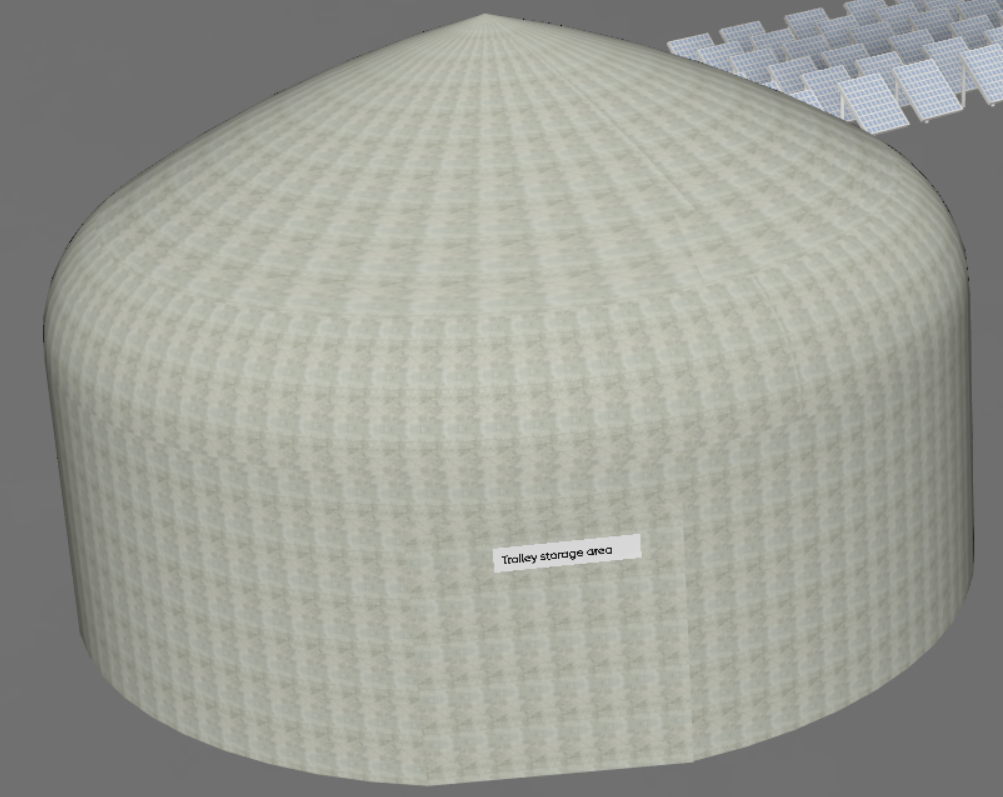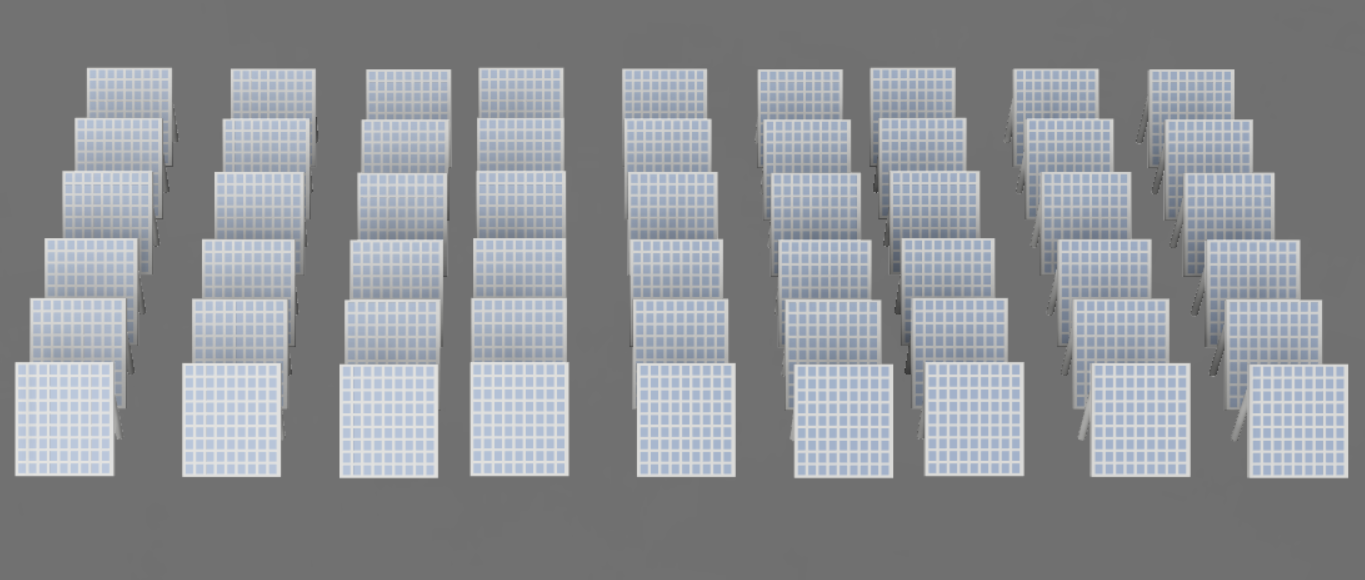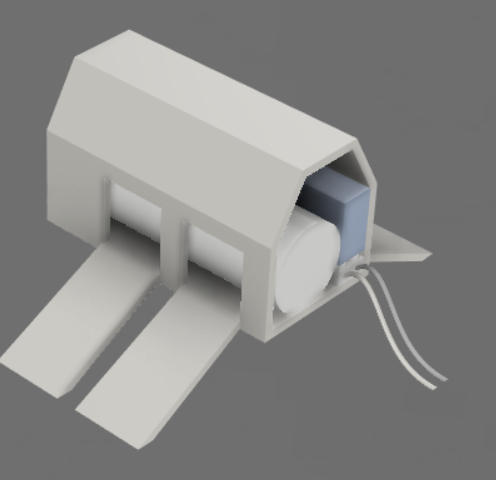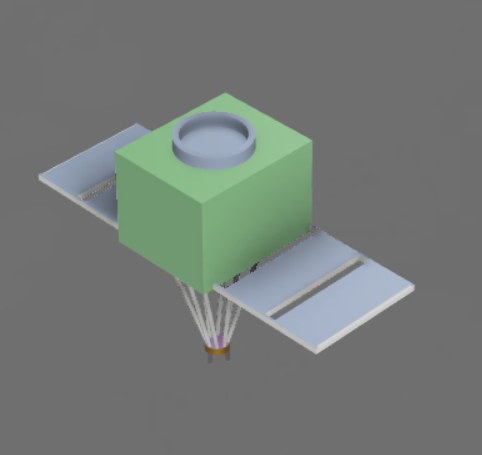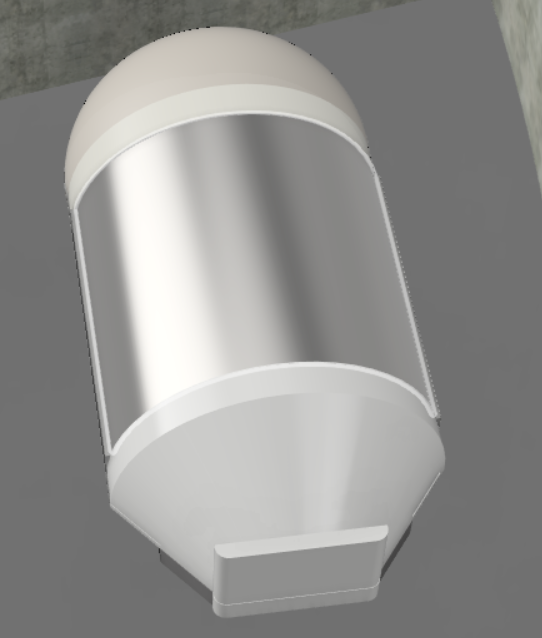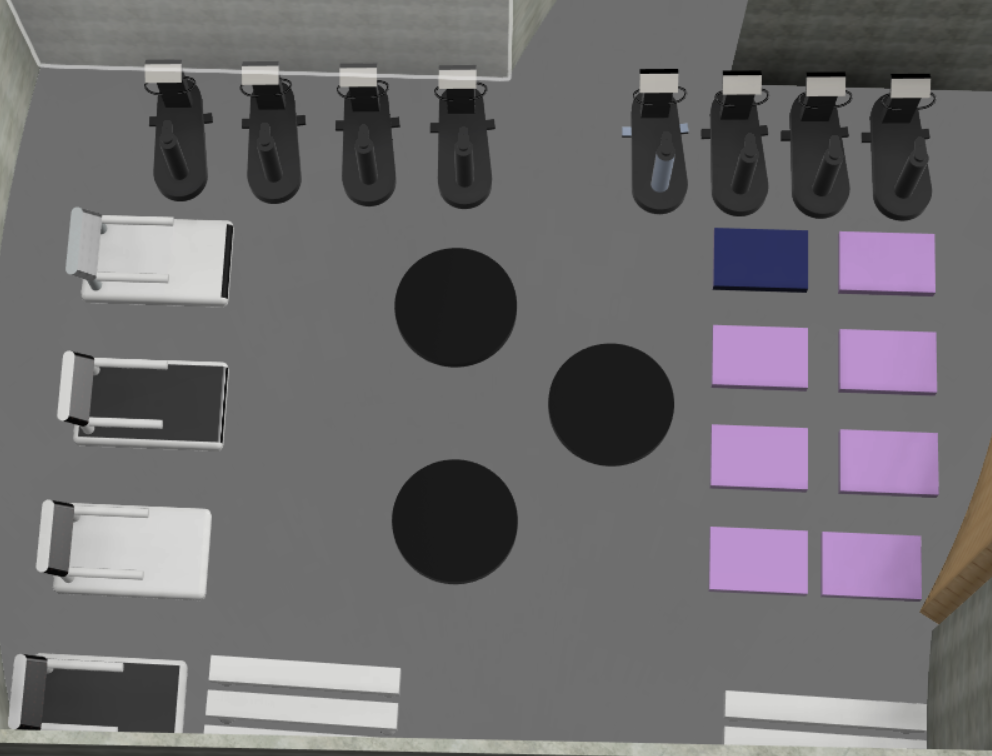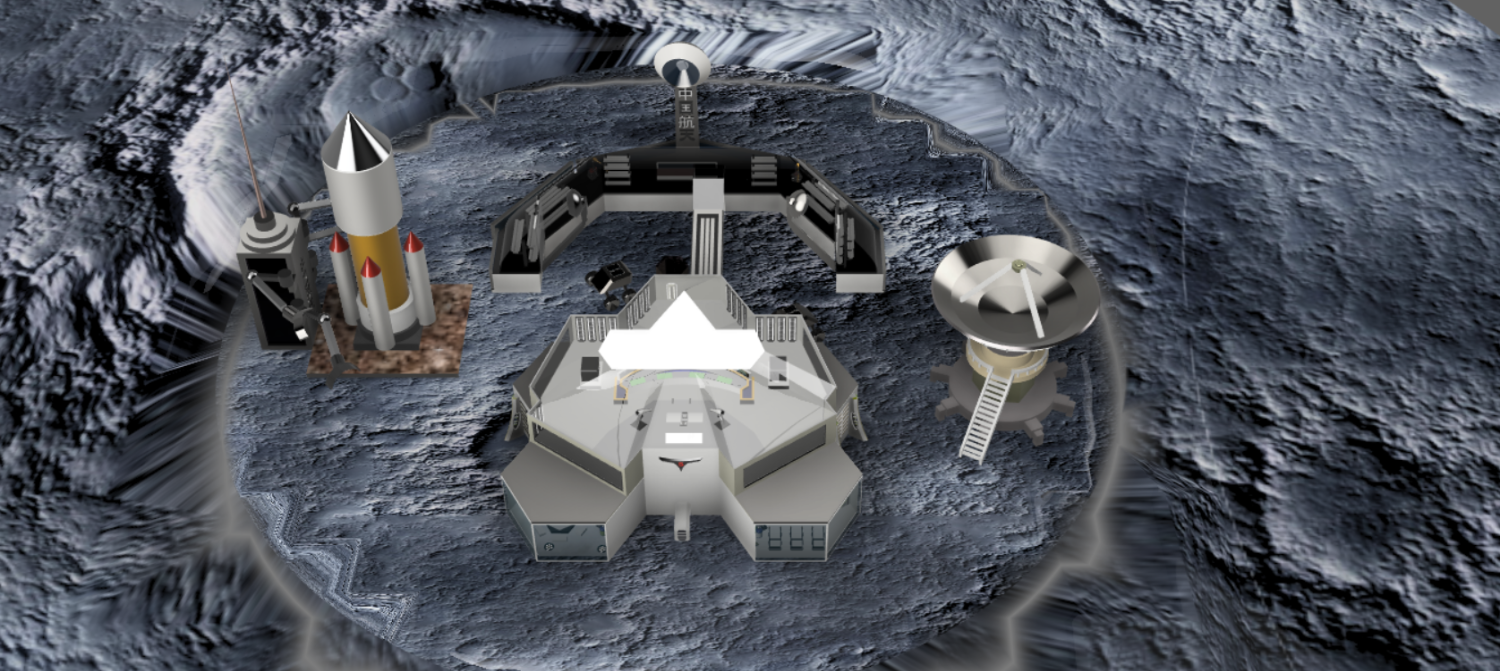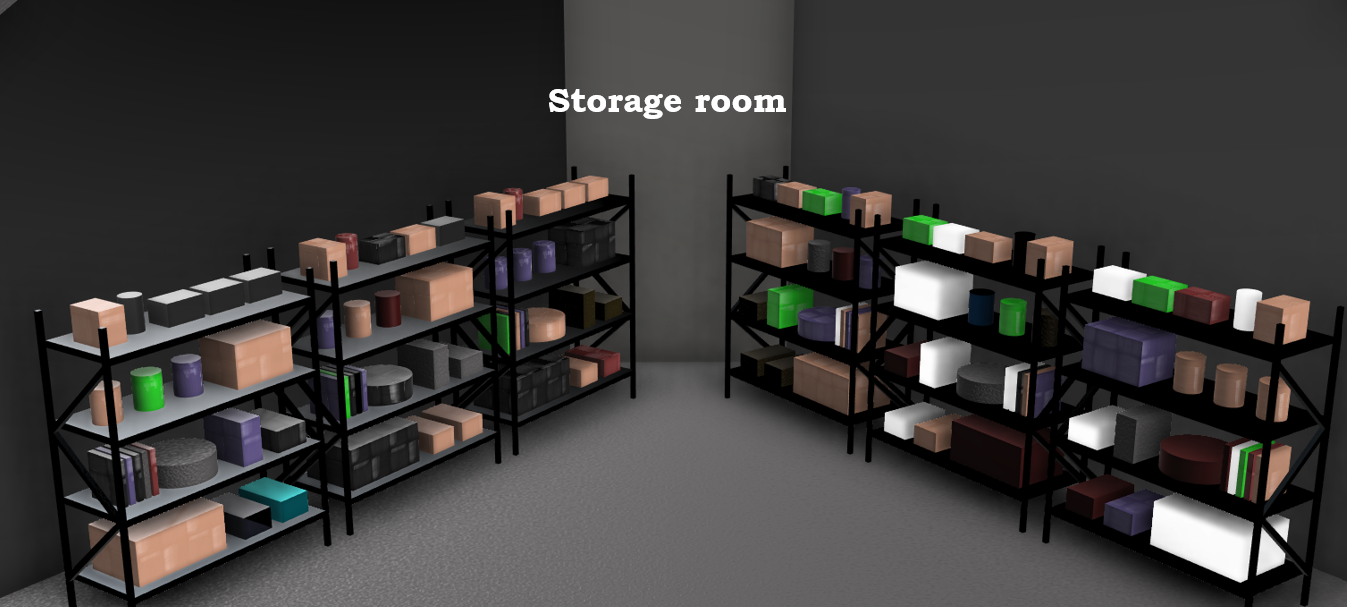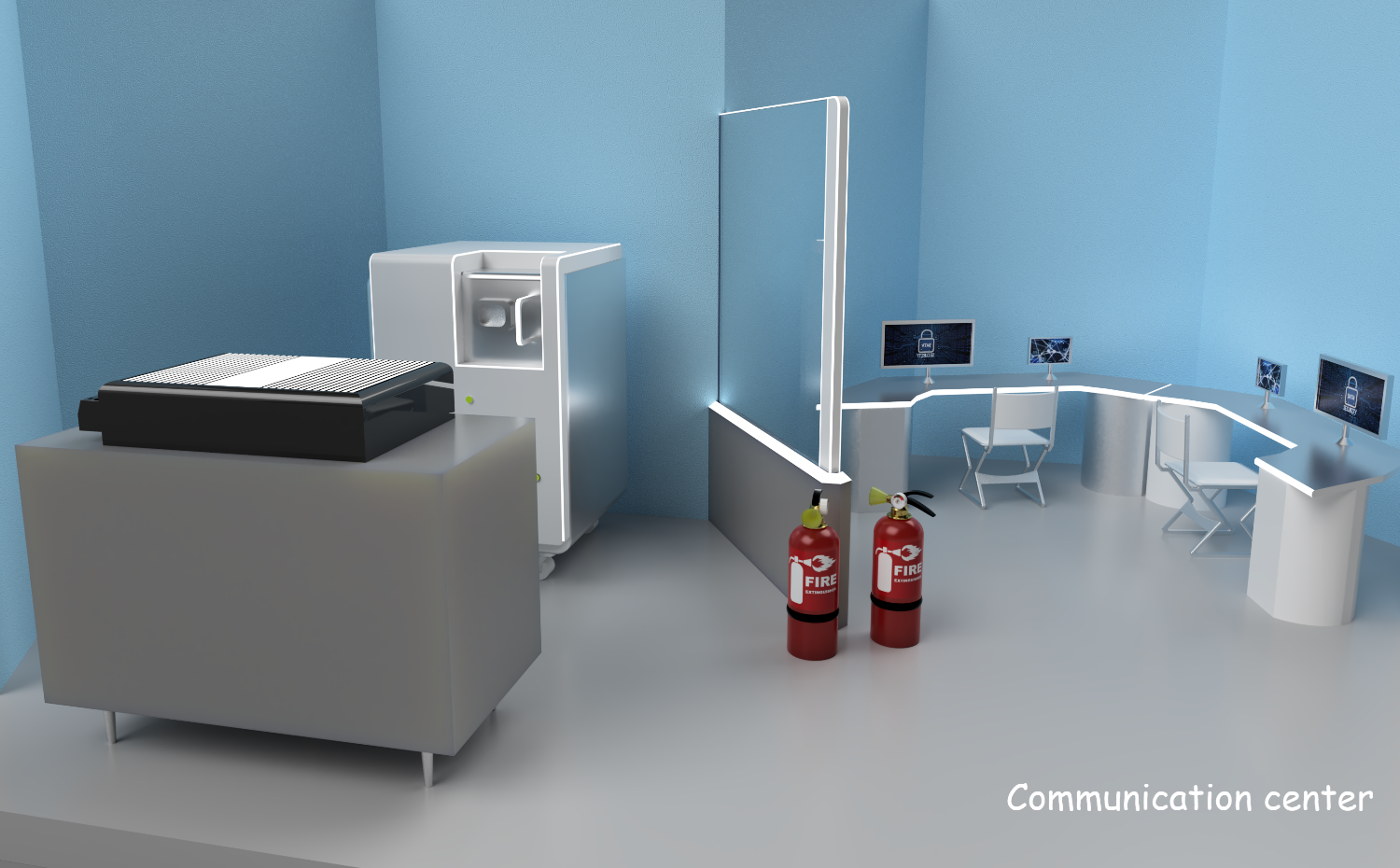Moon Camp Pioneers Gallery 2021-2022
In Moon Camp Pioneers each team’s mission is to 3D design a complete Moon Camp using Fusion 360. They also have to explain how they will use local resources, protect astronauts from the dangerous of space and describe the living and working facilities.
Team: The Attraction of Moon
郑州轻工业大学 河南省郑州市 China 18, 19 3 / 1
External viewer for 3d project
|
Project description
Our lunar camp is named “the attraction of moon”. |
|||
|
2.1 Where do you want to build your Moon Camp?
Reason: the base established on the side of the moon facing the earth has superior location resources relative to the earth, and the cost is low. At present, communication, meteorology, resources and other application satellites located in the geostationary orbit 36000 kilometers above the earth’s equator have high positions and play a great role. They revolve around the earth at the same speed as the earth’s rotation. From the ground, they seem to be fixed in the air. They can communicate and observe the earth in a considerable range. The moon is more than 10 times higher from the earth than these satellites. Relatively speaking, due to the convenience of communication and control, it is easier to build a permanently inhabited base on the side of the moon facing the earth than at the far end of the moon. 2.2 How do you plan to build your Moon Camp? Describe the techniques, materials and your design choices.
First, they will land on the moon in batches, initially composed of scientists and engineers. They will study the composition of the moon and use the existing materials of the moon to transform them into the resources we need through experimental exploration. Purifying the water on the moon for human use, of course, can also be used as raw materials for fuel cells. Hydrogen fuel cells can provide energy in the long night to prolong the time of astronauts on the moon. And most importantly, water can be broken down into hydrogen and oxygen, which is rocket fuel. The lunar land has the necessary materials to make cement. Mining equipment can screen out the organic molecules in the lunar dust and build huge buildings that cannot be brought from the earth. In the future, the robot arm controlled by 3D printing technology and ROS can print and build most of the things needed by human beings. In addition, the use of some special metals and materials will make the survival of the moon more favorable. At the same time, ROS system is used to control the car for patrol and monitoring to ensure the safety of the base, and monitor the environment outside the base and the facilities inside the base in real time with the monitoring equipment outside the base. 2.3 The environment on the Moon is very dangerous for the astronauts. Explain how your Moon Camp will protect them. (maximum 150 words)
If there is a lunar magnetic field, it will be of great significance for the establishment of a lunar scientific research station in the future. It provides a natural protective barrier, and the solar wind will be deflected by it. If the lunar scientific research station is built in the lunar magnetosphere, the space environment will be much safer. The moon has no magnetic field of the earth, and there are many local magnetic fields, which we call “magnetic anomaly”. Magnetic anomaly is a multipole, arched closed magnetic line of force, which is like a small geomagnetic field. When the solar wind encounters these small magnetic fields, it deflects and flows around under the action of the magnetic field, forming a protective structure similar to the earth’s magnetosphere. If the magnetic anomaly can shield more than 50% of the solar wind, we think that a micromagnetic layer is produced. |
|||
|
2.4 Explain how your Moon Camp will provide the astronauts with:
|
Water
|
Food
|
Power
|
Air
|
|
Water: lunar ice in the permanent shadow pit will be the easiest source of hydrogen and oxygen to use. Use mirrors to reflect sunlight to melt ice, and then capture water vapor through the dome above the lunar crater. Alternatively, a furnace can be installed on the probe vehicle to heat the soil with ice, so as to obtain water. |
Food: foods such as cabbage and potatoes can be hydroponically cultured in a closed greenhouse illuminated by LED. Plants can reuse waste and convert carbon dioxide into oxygen, so they can form a key part of the life support system. |
Energy: photovoltaic cells can generate electricity, while solar concentrators can generate heat to support 3D printing, etc. Lasers can transfer energy from areas where sunlight can shine to areas in shadow. Solar powered electrolyzers can decompose water into oxygen and hydrogen, which can then be used to make fuel or put into fuel cells to supply energy at night. |
Air: oxygen can also be obtained from lunar soil (also known as topsoil). Sunlight concentrators, namely mirrors and prisms, can produce high temperatures and release oxygen from metal oxides. This can produce water and metal by-products. But this process requires hydrogen. |
|
2.5 Explain what would be the main purpose of your Moon Camp.
Travel Because getting out of the earth in the future will no longer be difficult. As a planet that we can see but can’t touch all the time, the moon will naturally arouse our infinite longing. And we can see our proud home from outside the earth, which is one of the attractions; People can feel the superiority of one sixth gravity here, which is the second attraction point; The most important classic is the traces left by human beings, such as the national flag inserted in the first moon landing, which is a cultural scenic spot; And there is no interference of reflected light here. We can clearly see the major constellations. Because there is no atmosphere to refract starlight, the stars will not flash, so we can feel more real and less romantic night sky. |
|||
|
3.1 Describe a day on the Moon for your Moon Camp astronaut crew.
he morning of lunar life starts with cleaning up and sanitation in order to receive today’s new tour group. After breakfast, the task of checking the equipment is assigned, from the water tank collection device to whether the solar panel is damaged, and whether the survey and oxygen supply equipment are in good condition. After the arrival of the tour group, first allocate everyone’s rooms and necessary equipment. Next, astronauts need to introduce the equipment and their uses of the lunar camp, and then let everyone sightseeing in the appropriate area of the lunar camp, such as the full landscape platform and plant planting base on the second floor. After the astronauts have had a special lunar base lunch with the tour group, they will improve the energy and equipment of the lunar sightseeing car, drive the lunar sightseeing car to carry the people of the tour group, go sightseeing from the safe route surveyed by the previous survey car, and get off to watch when they arrive at a specific place with good equipment. After sightseeing, back to the base, the astronauts will check the equipment information again and turn on the night safety system to end the day. |
|||


